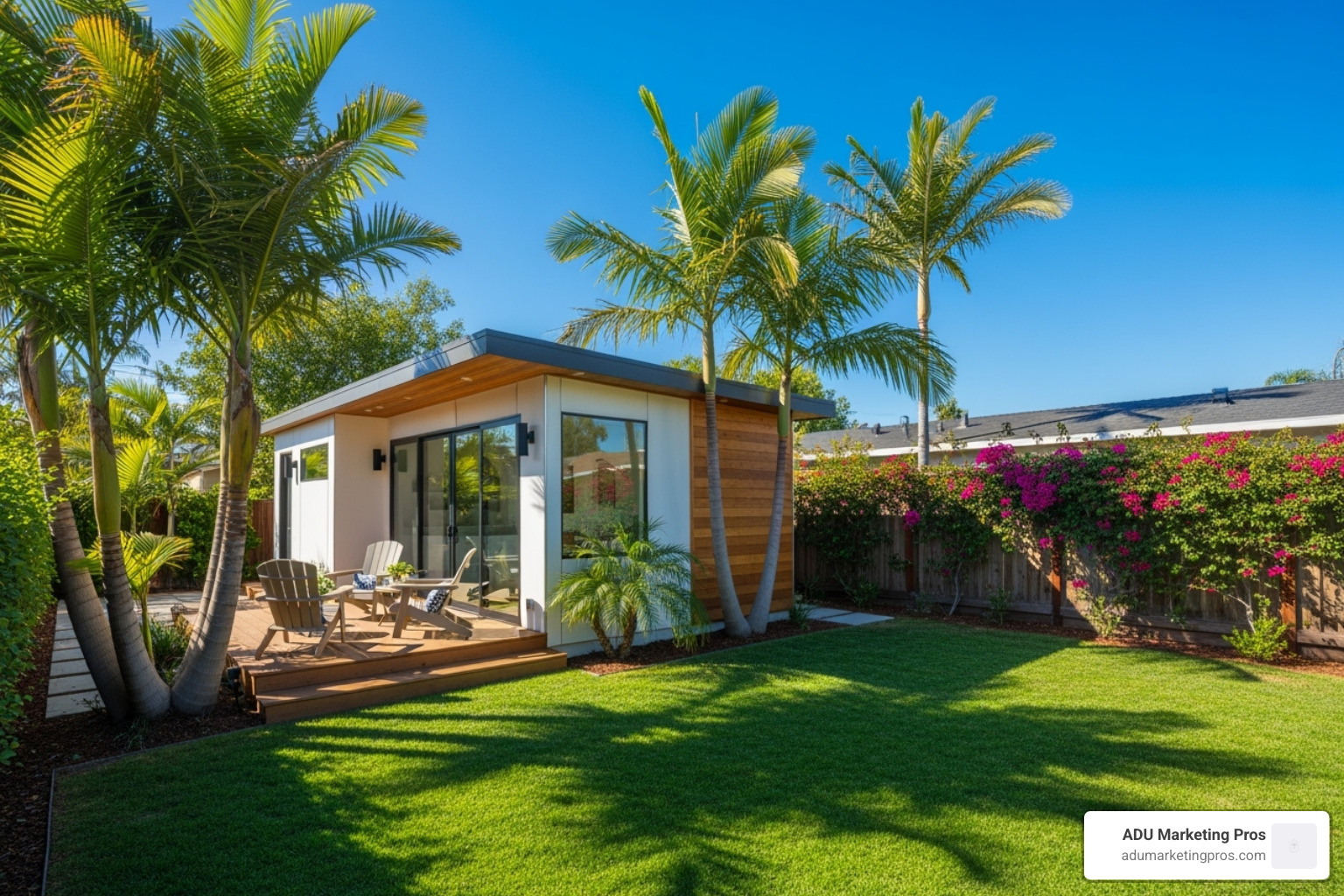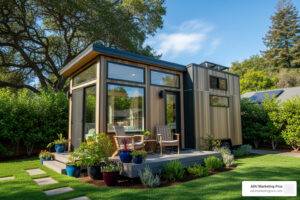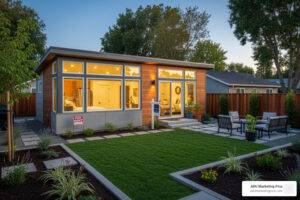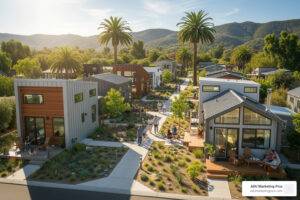Why Parking Rules Matter for Your San Diego ADU Project
Parking for ADU San Diego regulations are simpler than most homeowners think. Here’s what you need to know right away:
Quick Answer:
- Most ADUs require zero parking spaces – no parking required outside Coastal Overlay Zone
- Coastal properties may need 1 space – only if in Beach Impact Area AND outside transit priority area
- Garage conversions don’t require replacement parking – you can convert without adding new spaces
- Transit Priority Areas get complete exemption – within half-mile of major transit stops
If you’re planning an ADU in San Diego, parking requirements shouldn’t be your biggest concern. Thanks to state legislation aimed at addressing California’s housing crisis, the vast majority of Accessory Dwelling Units can be built without providing any parking spaces at all.
This represents a dramatic shift from traditional development requirements. The state recognized that strict parking mandates were blocking much-needed housing construction, especially in urban areas where alternative transportation options exist.
However, location matters. Properties in certain coastal areas may still face parking requirements, and understanding these nuances can save you time and money during the planning process.
Whether you’re converting an existing garage, building a detached unit, or exploring a Junior Accessory Dwelling Unit (JADU), the parking rules vary based on your specific property location and project type.
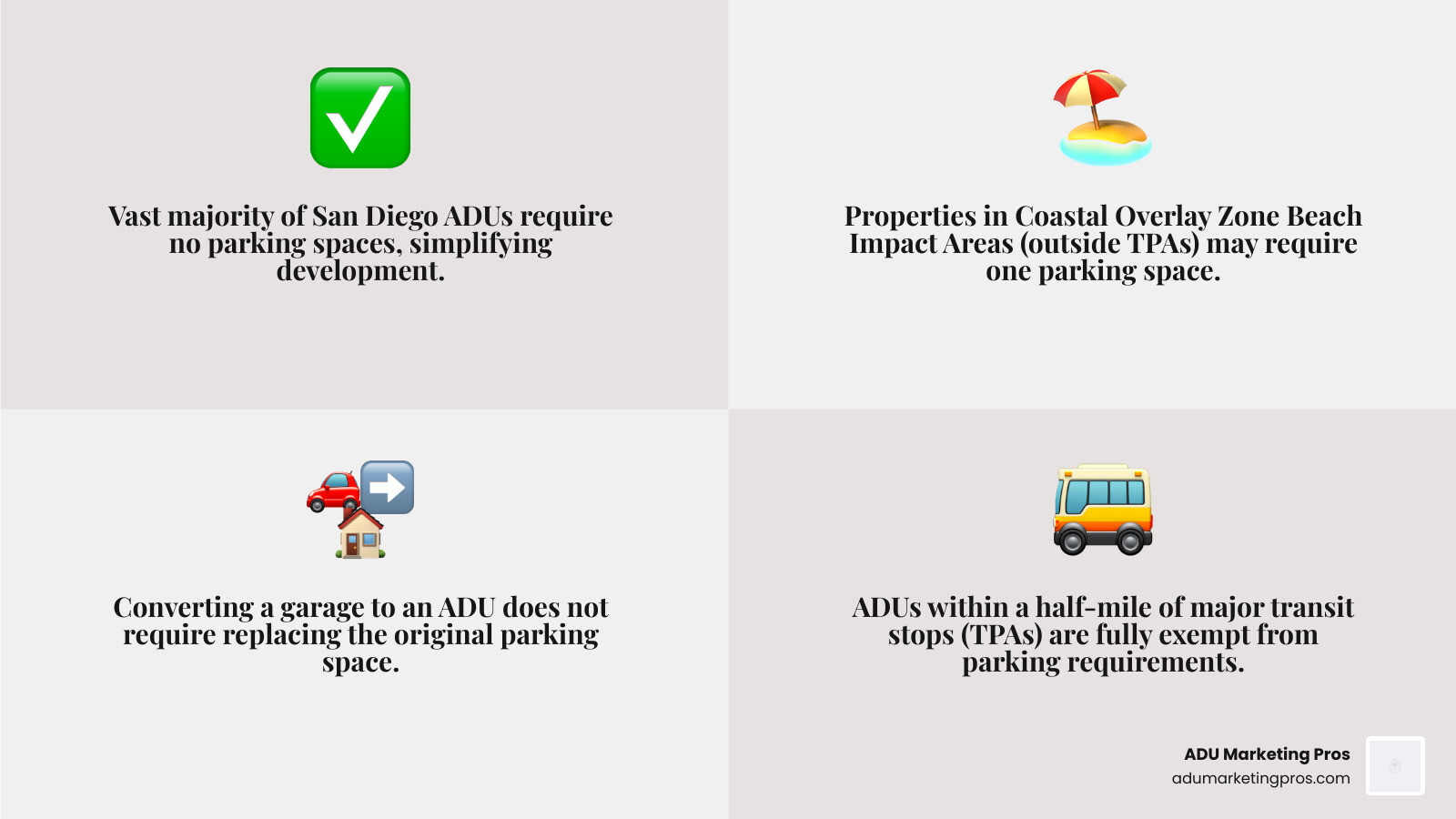
The General Rule: When is Parking Required for a San Diego ADU?
If you’re wondering about parking for ADU San Diego requirements, here’s some great news: the rules have changed dramatically in your favor. What used to be a complex maze of parking mandates has been simplified thanks to California’s response to the housing crisis.
The state legislature recognized that strict parking requirements were blocking much-needed housing development. So they stepped in with sweeping changes that prioritize getting more housing built over traditional parking concerns. This means San Diego, like other California cities, had to adapt its rules to match state priorities.
These changes affect both regular Accessory Dwelling Units (ADUs) and the smaller Junior Accessory Dwelling Units (JADUs). Whether you’re planning to build in a single-family neighborhood or a multi-family zone, the state’s influence has made things much more straightforward.
For a complete picture of how these changes fit into San Diego’s broader ADU landscape, you’ll want to check out More info about San Diego ADU Laws.
The Baseline Requirement: Zero Parking Spaces
Here’s the part that surprises most homeowners: the standard parking requirement for most San Diego ADUs is zero spaces. That’s right – no parking required at all.
This isn’t some loophole or temporary rule. It’s a deliberate policy designed to remove barriers that were preventing people from adding housing to their properties. The state mandated these exemptions, and San Diego incorporated them into the municipal code to make ADU development as smooth as possible.
Think about what this means for your project. You don’t need to sacrifice valuable yard space for a parking pad. You don’t need to worry about fitting a driveway into your design. You can focus on creating the best possible living space without the old parking constraints.
The city processes these projects through ministerial approval, which means if your ADU meets the established criteria, they have to approve it. No lengthy discretionary reviews or parking impact studies – just a straightforward path to adding housing.
This approach recognizes that many ADU residents rely on street parking, public transit, walking, or biking. In urban areas like San Diego, requiring off-street parking for every unit often created more problems than it solved.
The Major Exception: The Coastal Overlay Zone
Now, before you get too excited about the “no parking” rule, there’s one important exception you need to know about. Properties in San Diego’s Coastal Overlay Zone operate under special regulations influenced by the California Coastal Commission.
The good news is that even in coastal areas, the general “zero parking” rule still applies to most properties. But there’s a specific subset where parking requirements kick in: if your property sits within the Beach Impact Area (also called the Parking Impact Overlay Zone) and it’s outside of a designated sustainable development area, then you’ll typically need to provide one off-street parking space for your ADU.
This exception makes sense when you consider the unique pressures on coastal communities. Beach areas deal with heavy visitor traffic, limited street parking, and residents who depend on being able to park near their homes. The Coastal Commission wanted to ensure that new ADUs in these high-impact areas wouldn’t worsen existing parking shortages.
The key thing to remember is that location matters down to the specific block. Two properties just streets apart might have completely different parking requirements depending on their exact position within the coastal zone boundaries.
If you’re planning an ADU anywhere near the coast, it’s worth taking a close look at the zoning maps or consulting with a professional who understands these coastal regulations. A little research upfront can save you from surprises later in your project planning.
Navigating Special Zones: Coastal Overlay and Transit Priority Areas
When you’re planning your ADU, understanding where your property sits on San Diego’s zoning map can make all the difference for parking for ADU San Diego requirements. Think of it like checking the weather before a beach day – a little preparation saves you from unpleasant surprises later.
The good news is that San Diego’s zoning maps are publicly available, and once you know what to look for, determining your parking requirements becomes much clearer. The two most important areas that affect your ADU parking are the Coastal Overlay Zone and Transit Priority Areas.
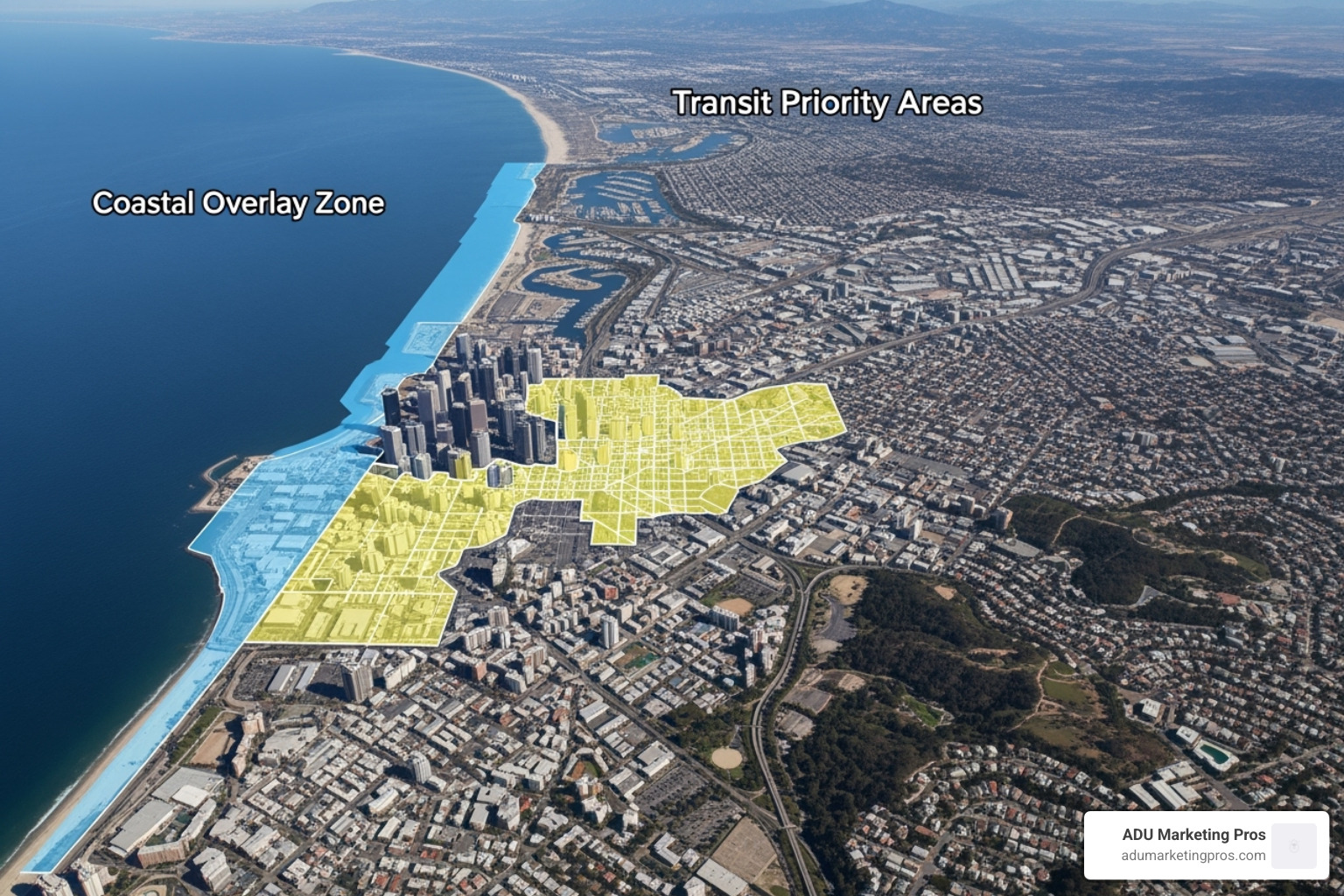
These special zones reflect San Diego’s commitment to both environmental protection and sustainable development. The coastal areas need special consideration due to their unique environmental sensitivity, while transit-oriented areas get incentives to encourage walkable, car-free living.
The City of San Diego’s changes to their Local Coastal Program have updated how ADUs are handled in these coastal areas, generally making the process more streamlined while still protecting our beautiful coastline.
The Coastal Overlay Zone Explained
Living near San Diego’s gorgeous beaches comes with its perks, but it also means navigating some additional regulations. If your property falls within the Coastal Overlay Zone, you’re not automatically subject to parking requirements – but there’s a specific area within this zone where things get more interesting.
The Beach Impact Area within the Parking Impact Overlay Zone is where parking requirements can still apply. But here’s where it gets manageable: even in this area, you only need one off-street parking space for your ADU, and only if your property is also outside a transit priority area.
Better yet, San Diego has built in several practical exemptions that recognize not every property needs that parking space. Your ADU gets a free pass on parking if it’s 500 square feet or smaller – perfect for those cozy, efficient designs. Properties in historical districts also get exemptions, preserving the character of these special neighborhoods.
Attached ADUs don’t need parking either, which makes sense since they’re essentially extensions of your existing home. If you live in a residential permit parking district, you’re likely exempt too, since these areas already manage parking strategically.
One of the most forward-thinking exemptions applies when there’s a car-share vehicle within one block of your property. This recognizes that modern transportation is evolving beyond individual car ownership.
For a deeper dive into all aspects of building in San Diego, check out our comprehensive ADU San Diego guide.
Transit Priority Areas (TPAs): The Ultimate Parking Exemption
Here’s where San Diego’s commitment to sustainable transportation really shines. If your property sits within a Transit Priority Area – defined as within half a mile of a major transit stop – you’ve won the parking lottery.
State law is crystal clear on this point: cities cannot require parking for ADUs in TPAs, period. This isn’t just a suggestion; it’s a mandate that recognizes the reality of modern urban living. When you can hop on a trolley or catch a frequent bus line, why should you be forced to build parking you might not even need?
This exemption applies whether you’re near an existing major transit stop or one that’s officially planned. San Diego’s expanding transit network means more properties qualify for this exemption every year. The trolley system, in particular, has opened up TPA designations throughout the county.
The beauty of the TPA exemption is its simplicity. You don’t need to apply for a waiver or meet additional criteria – if you’re in a TPA, you’re automatically exempt from any parking for ADU San Diego requirements. It’s the state’s way of encouraging dense, walkable development near transit infrastructure.
This policy recognizes that people living near quality public transportation often choose car-free or car-light lifestyles. Your ADU tenants might prefer the convenience of transit over the hassle and expense of car ownership, especially in areas where parking is already at a premium.
Garage Conversions and Replacement Parking for ADU San Diego
Converting your garage into a living space is often the smartest way to add an ADU to your San Diego property. It’s typically more affordable than building from scratch, and you’re working with an existing structure that already has utilities nearby. But here’s the question that keeps many homeowners up at night: if I convert my garage, do I need to build a new parking space to replace the one I’m losing?
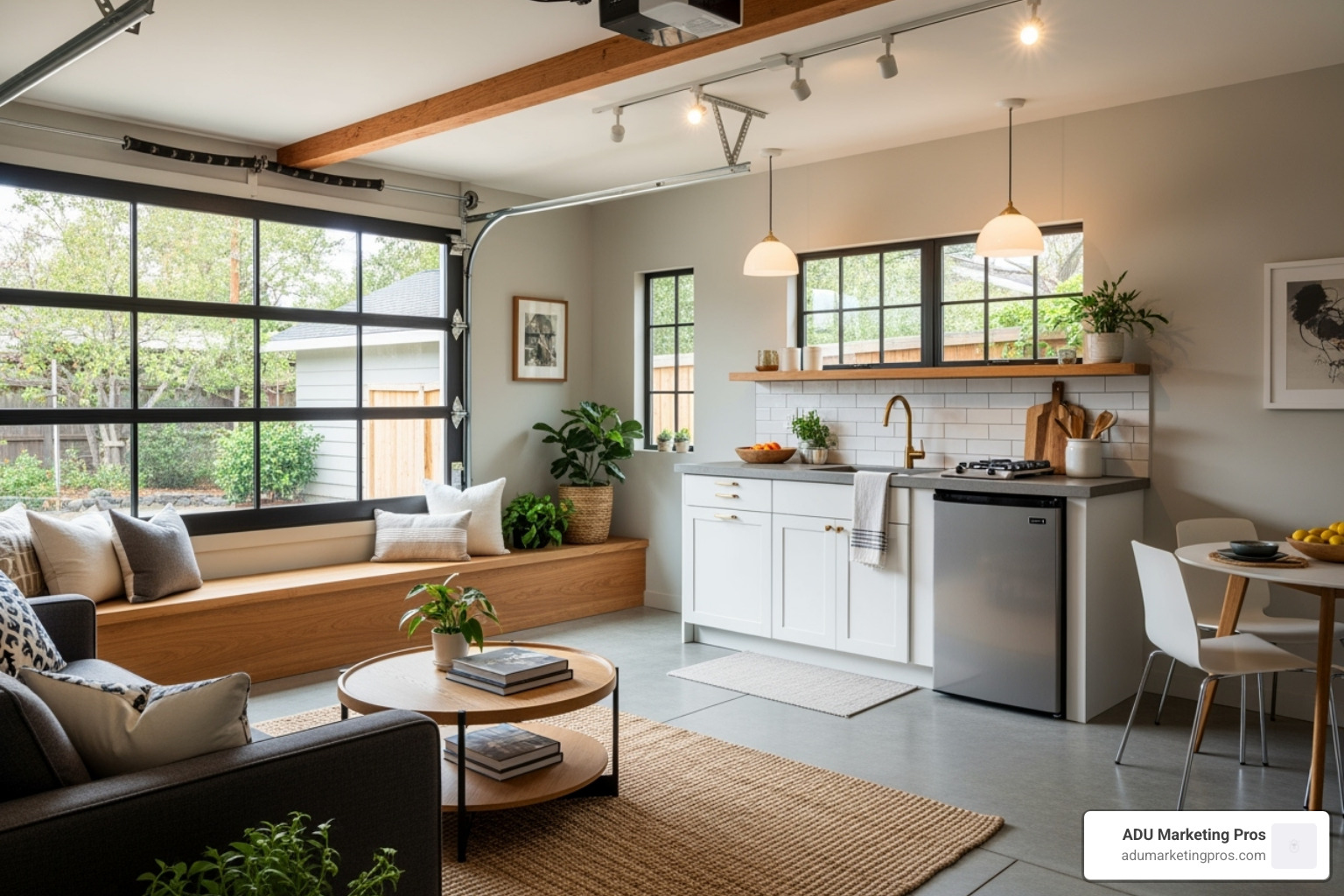
The beauty of garage conversions lies in their efficiency. You already have the structure, foundation, and often the electrical connections. What you need are solid plans that meet current building codes. Our guide on ADU Building Plans walks you through the planning process to ensure your conversion meets all requirements.
Converting Your Garage: Do You Need to Replace the Parking?
Here’s some fantastic news that surprises many homeowners: you generally don’t need to replace parking spaces when you convert a garage into an ADU. This applies whether you’re converting a traditional garage, a carport, or any other covered parking structure. Even if you decide to demolish the garage entirely to build a new ADU, replacement parking typically isn’t required.
This parking for ADU San Diego rule is a game-changer for homeowners. California recognized that requiring replacement parking was creating unnecessary barriers to housing development. The state wanted to make it easier for families to add housing units without jumping through expensive parking hoops.
The rules became even clearer with recent state laws, which removed any lingering confusion about uncovered parking spaces. This legislation clarified that replacement parking is not required for any parking spaces—whether in a garage, a carport, or an uncovered spot—that are converted or demolished for ADU construction.
Think about what this means for your project. You can transform that garage that’s been collecting dust and old exercise equipment into a beautiful rental unit or space for aging parents. No need to sacrifice yard space for a new parking pad or worry about expensive driveway expansions.
Practical considerations for parking for ADU San Diego after a conversion
While the city won’t force you to replace parking, smart homeowners think through the practical side of losing a parking space. Your family’s daily routine and your property’s long-term value both deserve consideration.
Tenant expectations play a huge role if you’re planning to rent your converted ADU. Most renters in San Diego expect parking, especially if they’re coming from suburban areas. A dedicated parking space can boost your rental income significantly and help you attract responsible, long-term tenants who value convenience.
Street parking reality varies dramatically across San Diego neighborhoods. Some areas have plenty of street parking that rarely fills up. Others turn into parking battlegrounds every evening when residents return from work. Take a honest look at your street during peak hours before making your decision.
Property value considerations matter for your future flexibility. When you eventually sell your home, buyers often view available parking as a major plus. Even if it’s tandem parking in your driveway or a creative solution that meets your family’s needs, having options beats having none.
Storage needs often get overlooked until moving day arrives. Garages serve as catch-all spaces for holiday decorations, tools, sports equipment, and those items you might need someday. Plan alternative storage solutions before you break ground on your conversion.
Guest parking becomes more important when you’re housing additional people on your property. Your ADU tenants will have friends and family who visit. Your own guests still need somewhere to park. Consider how these needs will work together in your neighborhood’s parking ecosystem.
The regulations give you freedom, but thinking ahead helps you make choices you’ll be happy with years down the road. For homeowners ready to rent their converted space, our comprehensive guide on ADU Rentals San Diego provides valuable insights into creating attractive, profitable rental units.
Future Outlook and Other Key Parking Considerations
The landscape of parking for ADU San Diego continues to evolve, and staying informed about these changes can help you make smarter decisions for your project. While the overall trend strongly favors reducing parking barriers, understanding what might be coming down the pipeline—and knowing your options when parking is required—can save you headaches later.
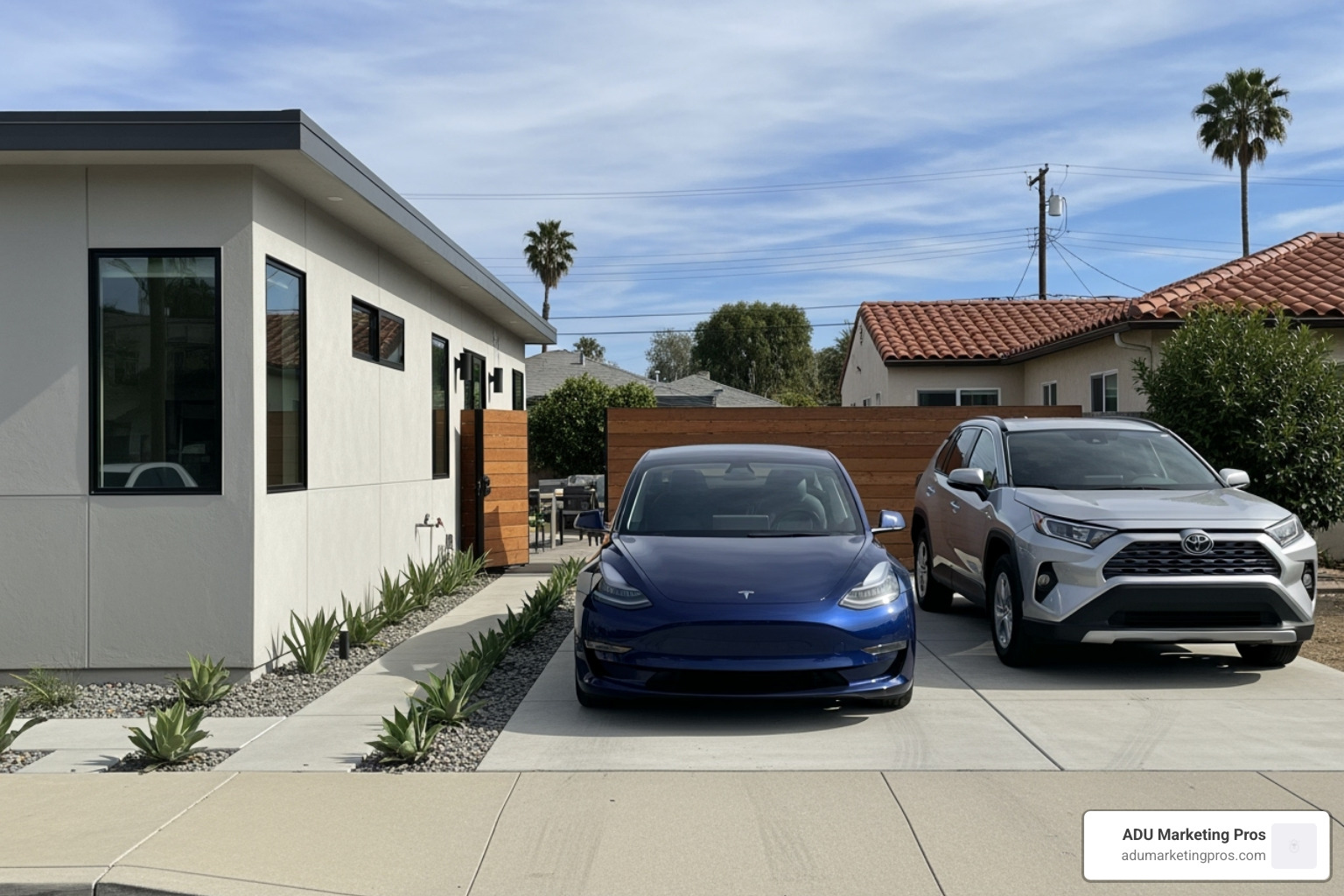
Think of it this way: the rules we have today didn’t appear overnight, and they won’t stay frozen forever. City planners, community members, and state legislators are constantly balancing the need for more housing with neighborhood concerns and practical considerations.
For ADU construction firms looking to steer these evolving rules and communicate effectively with clients, having a strong marketing strategy is key. Our ADU Construction Marketing Agency helps businesses stay ahead of regulatory changes while building trust with homeowners.
Future of Parking for ADU San Diego: What’s Changing?
San Diego’s approach to ADU development keeps getting refined, much like a recipe that gets better with each iteration. The good news? The core principle of “no parking required for most ADUs” remains rock solid, backed by strong state legislation aimed at addressing California’s housing crisis.
However, city officials occasionally float new ideas as part of broader housing strategies. For example, recent discussions have explored whether affordable ADU bonus programs or bonus ADU homes built outside Transit Priority Areas might need different parking considerations. These conversations usually emerge from the city’s Housing Action Package initiatives, where planners try to balance increased housing density with community feedback.
Here’s what’s interesting about these proposed regulations: they often stem from real neighborhood concerns. Residents worry about street parking getting more crowded as housing density increases. It’s a legitimate concern, and city council amendments sometimes try to address it. But remember, there’s a big difference between proposed changes (which may never happen) and current regulations (which you can count on today).
The state’s commitment to reducing ADU barriers remains strong. Any local changes must still align with California’s overarching goal of making it easier, not harder, to build accessory dwelling units.
Siting Your Required Parking: Setbacks and Tandem Rules
Even in those rare cases where your ADU project needs a parking space—mainly in specific coastal areas outside transit zones—San Diego gives you plenty of flexibility in how to handle it. The city understands that rigid parking requirements can kill otherwise great projects, so they’ve built in some smart solutions.
The tandem parking option is particularly clever. Instead of needing a wide driveway that accommodates two cars side by side, you can park one vehicle directly behind another. This works perfectly for couples or families who don’t need to access both cars simultaneously. It’s also a lifesaver when you’re working with a narrow lot where expanding the driveway width just isn’t practical.
San Diego also allows required parking spaces within property setbacks, which is a huge advantage. Traditional zoning often treats setbacks as untouchable zones, but for ADU parking, the city recognizes that using this space makes sense. This means your existing driveway might already provide all the parking you need, even if it extends into what would normally be a restricted area.
The driveway placement rules are equally sensible. As long as your driveway provides safe vehicular access and meets basic dimensional requirements, you’re typically good to go. You don’t need to completely redesign your property’s circulation patterns just to accommodate a parking space.
For the technical details on parking space dimensions and specific standards, the city provides comprehensive guidelines through the Parking space standards from SDMC Chapter 14, Article 2, Division 5. These standards ensure safety and functionality without being unnecessarily restrictive.
The bottom line? Even when parking is required, San Diego’s regulations are designed to work with your property, not against it. The city wants your ADU project to succeed, and these flexible siting options prove it.
Frequently Asked Questions about San Diego ADU Parking
We get a lot of questions about parking for ADU San Diego. After helping hundreds of homeowners steer these regulations, we’ve noticed the same concerns come up again and again. The good news? Most of these worries are unnecessary once you understand how streamlined the current rules really are.
How many parking spots are required for an ADU in San Diego?
For the vast majority of properties, the answer is zero parking spaces required. This isn’t a loophole or temporary rule – it’s a deliberate policy designed to make housing development easier and more affordable.
State law and city ordinances have systematically removed parking requirements for most ADUs to encourage development during California’s ongoing housing crisis. The rules are so favorable that you’d actually have to be in a very specific location to need any parking at all.
The only significant exception applies to properties within the Coastal Overlay Zone’s Beach Impact Area that are also outside a transit-friendly area. Even then, you’d only need one parking space, and there are still plenty of ways to get a waiver.
Even within this coastal exception, you can avoid the parking requirement if your ADU is under 500 square feet, located in a historic district, attached to the main house, within a permit parking district, or near a car-share vehicle. The city really wants to make this work for homeowners.
Can I build an ADU if I live within half a mile of a bus stop?
Yes, absolutely! This is actually one of the best situations you can be in when planning an ADU. Living within a half-mile of a major public transit stop places your property in what’s called a Transit Priority Area (TPA).
Here’s where state law becomes your best friend: it explicitly prohibits cities from imposing any minimum parking requirements for ADUs within a TPA. This gives you a complete exemption from any parking worries, even if you’re in that tricky coastal zone we mentioned earlier.
The state recognizes that if you’re close to good public transit, you and your ADU tenants are less likely to need cars anyway. It’s a win-win for sustainable development and your project timeline.
Do I have to replace my garage parking spot if I convert it to an ADU?
No, you do not have to replace your garage parking. This might be the most liberating rule in the entire ADU playbook, and it’s one of the most powerful provisions encouraging garage conversion projects across San Diego.
You are not required to replace the parking spaces in a garage, carport, or other covered structure that you convert into an ADU or demolish to build an ADU. Think about it – you’re taking an underused space and turning it into actual housing. The city wants to encourage this.
The rules got even better with recent updates to state law. This legislation now explicitly states that the “no replacement” rule also extends to uncovered parking spaces that are demolished or converted for ADUs. So even if you’re removing a surface parking pad to build your ADU, you are not required to create a new parking spot elsewhere on your property.
This flexibility is what makes garage conversions so attractive financially. You’re not just adding housing – you’re doing it without the expense and complexity of creating new parking infrastructure.
Conclusion
Navigating the regulations for parking for ADU San Diego doesn’t have to be a headache. After walking through all these rules together, here’s what really matters: most properties don’t require any parking spaces at all for their ADU.
Think of it this way – the state of California looked at the housing crisis and said, “We need to make building ADUs as simple as possible.” That’s why parking requirements have been largely eliminated. Whether you’re planning a cozy studio or a full-sized unit, chances are you can focus on design and livability instead of worrying about where cars will park.
Your location is the key factor that determines everything. If you’re anywhere inland or in most of San Diego’s neighborhoods, you’re in the clear with zero parking requirements. Even if you happen to be in that narrow slice of coastal property within the Beach Impact Area, there are so many exemptions that you’ll likely still avoid needing a parking space.
The garage conversion rules are particularly homeowner-friendly. Converting that dusty garage into a beautiful living space? You don’t need to replace those parking spots. It’s like the city is giving you permission to transform underused space into much-needed housing without jumping through hoops.
What’s exciting is how these simplified rules empower homeowners to think creatively about their properties. No longer do you need to sacrifice valuable yard space for a parking pad or worry about complex engineering for new driveways. Instead, you can focus on creating housing that truly works for your family or generates rental income.
The Transit Priority Area exemptions show San Diego’s commitment to sustainable development too. If you’re near public transit, you get complete parking freedom – encouraging car-free living and supporting the city’s environmental goals.
For ADU construction firms looking to clarify these complex rules for their clients, ADU Marketing Pros provides targeted strategies to communicate expertise and build trust, helping you stand out in a competitive market while navigating these evolving regulations with confidence.
This parking simplification is just one piece of San Diego’s broader effort to address the housing shortage. By removing barriers like mandatory parking, the city is making it genuinely feasible for regular homeowners to add housing stock to their neighborhoods.
Ready to dive deeper into the complete picture? Understand all San Diego ADU Laws to get the full scope of what’s possible with your ADU project.

